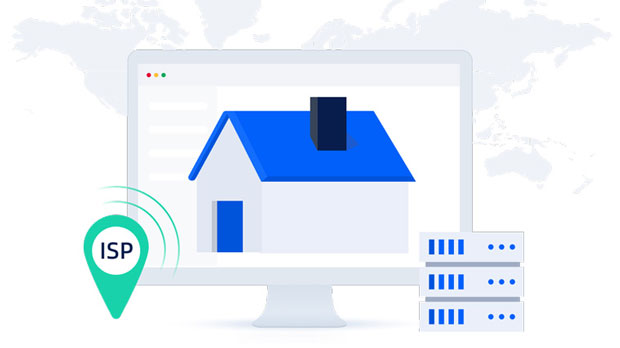In the world of web scraping and data extraction, using proxies is crucial for avoiding IP bans, ensuring anonymity, and overcoming restrictions on access to certain websites. Crawling proxies, specifically, play an important role in maintaining the effectiveness of scraping operations. Many open-source frameworks provide built-in support for proxy management, allowing developers to easily integrate crawling proxies into their scraping workflows. These frameworks are designed to handle the complexities of proxy rotation, error handling, and bypassing detection mechanisms put in place by websites. This article explores several open-source crawling frameworks that are compatible with crawling proxies, delving into their features, advantages, and real-world use cases. 1. Scrapy: A Powerful and Flexible FrameworkScrapy is one of the most popular and flexible open-source web scraping frameworks. It allows users to build spiders that can crawl websites and extract data efficiently. Scrapy offers robust support for proxy rotation, which is crucial for managing multiple proxy servers when scraping websites that implement anti-scraping measures.Key Features for Crawling Proxies:- Middleware for Proxy Handling: Scrapy provides a built-in middleware that makes it easy to configure and manage proxies. Users can set up custom proxy lists and rotation logic, allowing the framework to switch between proxies automatically during the crawling process.- Error Handling and Retry Mechanism: In case of proxy failures or IP bans, Scrapy has a retry mechanism to ensure that the spider does not stop crawling. The framework can automatically retry requests using different proxies, ensuring continuity in data extraction.- Integration with Proxy Providers: Scrapy is highly customizable, allowing integration with third-party proxy services for enhanced anonymity and geo-targeting capabilities.Use Case: Scrapy is particularly well-suited for projects that require extensive data scraping across multiple websites, such as e-commerce price comparison tools, market research platforms, and social media data aggregation.2. Selenium: Browser Automation with Proxy SupportSelenium is a popular open-source framework for browser automation, frequently used for web scraping tasks where traditional HTTP requests fail to work due to JavaScript rendering or dynamic content loading. While Selenium itself is not primarily a scraping framework, it can be combined with crawling proxies to mimic human-like browsing behavior.Key Features for Crawling Proxies:- Proxy Configuration with WebDriver: Selenium allows users to configure proxies directly within the WebDriver setup. This makes it easy to rotate proxies or apply specific proxy configurations for different browsers or browser instances.- Headless Browsing: Selenium supports headless browsers (like Chrome and Firefox), making it a perfect tool for web scraping without the need for a graphical user interface. Headless browsing ensures faster operations when combined with proxies.- Bypassing JavaScript-Based Restrictions: For websites that require interaction with JavaScript, Selenium excels by mimicking user actions such as scrolling, clicking, and form submissions, making it a perfect tool for bypassing sophisticated bot detection systems.Use Case: Selenium is best suited for scraping websites that heavily rely on JavaScript for content rendering, such as social media platforms, news websites, and websites with interactive features.3. BeautifulSoup: Simple and Lightweight, Ideal for Smaller ProjectsBeautifulSoup is a lightweight, easy-to-use library that is often paired with requests to scrape static websites. While it does not offer native proxy support like Scrapy or Selenium, it can be integrated with proxy management tools to handle rotating proxies.Key Features for Crawling Proxies:- Custom Proxy Support via Requests: Although BeautifulSoup itself does not handle proxies, it can be paired with the Python Requests library, which supports proxy configuration. This allows users to rotate proxies by passing different proxy configurations in each request.- Simple to Use: BeautifulSoup's simplicity makes it ideal for smaller projects where proxy management is not the primary focus. It is easy to set up and integrate with external proxy services, making it a great choice for developers who need to scrape static websites quickly.- Handling CAPTCHA and Bans: By rotating proxies and using tools like CAPTCHA solving services, BeautifulSoup can still be effective in scraping websites with moderate anti-bot measures.Use Case: BeautifulSoup is best for scraping small websites with relatively simple structures, such as blogs, forums, and news aggregators, where complex anti-scraping mechanisms are not in place.4. PySpider: A Distributed Crawling FrameworkPySpider is an open-source web scraping framework designed to scale up to large projects. It supports distributed crawling, meaning users can scrape data from multiple sources simultaneously, making it a great choice for large-scale data scraping operations.Key Features for Crawling Proxies:- Proxy Pool Integration: PySpider provides native support for proxy pools, which allows users to automatically rotate proxies between requests. This is especially useful for distributed systems where proxy management can become complex.- Distributed Architecture: The distributed nature of PySpider allows multiple nodes to crawl different websites at the same time, each using a different proxy or set of proxies. This enhances the efficiency of large-scale data extraction tasks.- Easy Setup for Proxy Rotation: PySpider's interface allows users to easily configure proxy rotation rules, ensuring that each crawler node uses a different IP address to avoid IP bans.Use Case: PySpider is ideal for enterprises or research projects that require large-scale data collection, such as market intelligence platforms, scientific research projects, and SEO analysis tools.5. Requests-HTML: A Simple and Effective Option for Proxy RotationRequests-HTML is a Python library designed to simplify web scraping tasks, especially for dynamic content. It provides simple API calls to fetch web pages and render JavaScript. While not as feature-rich as Scrapy or Selenium, Requests-HTML supports proxy rotation through custom configurations.Key Features for Crawling Proxies:- Built-in Proxy Support: Like Requests, the Requests-HTML library supports proxy configuration out-of-the-box. Developers can configure proxies for each HTTP request, making it easy to implement proxy rotation manually.- Integration with Other Tools: Requests-HTML can be combined with other libraries like BeautifulSoup for parsing HTML, making it a lightweight and flexible solution for simple web scraping tasks with proxy rotation.- Handling Dynamic Content: Requests-HTML can render JavaScript, making it useful for scraping websites with dynamic content while using proxies to avoid detection.Use Case: Requests-HTML is great for smaller-scale projects where simplicity and flexibility are important, and where developers need to scrape websites with both static and dynamic content, such as blogs, online stores, and product pages.6. Playwright: A Modern and Fast Browser Automation ToolPlaywright is a newer open-source framework for browser automation that supports modern web scraping needs. It allows users to automate browser actions with high efficiency, similar to Selenium but with faster execution and support for modern web technologies.Key Features for Crawling Proxies:- Native Proxy Support: Playwright allows users to set up proxies directly in the browser context, ensuring each request can be routed through different IPs for improved anonymity.- Cross-Browser Automation: Playwright supports Chrome, Firefox, and WebKit, providing flexibility in scraping websites that require different browser engines.- High-Speed Scraping: Playwright's ability to interact with websites quickly, combined with proxy support, makes it an excellent choice for projects that need to extract large amounts of data in a short period.Use Case: Playwright is well-suited for scraping websites that require advanced browser automation and fast data extraction, such as social media platforms, e-commerce sites, and web applications.Conclusion: Choosing the Right Framework for Crawling ProxiesThe choice of open-source crawling framework that supports crawling proxies depends on the specific needs of the project. Scrapy offers a powerful, flexible solution for large-scale scraping, while Selenium excels in scraping dynamic JavaScript websites. BeautifulSoup, paired with requests, is ideal for smaller projects with simpler proxy requirements. PySpider is excellent for large, distributed crawls, and Playwright provides a modern, high-speed solution for browser automation. By understanding the strengths of each framework, developers can select the most suitable tool to ensure the success of their scraping projects while effectively managing crawling proxies.
May 19, 2025





















































